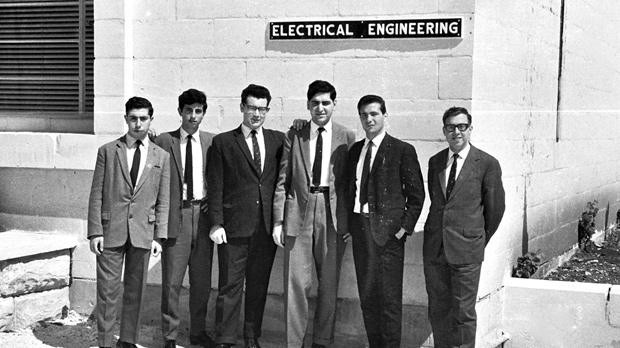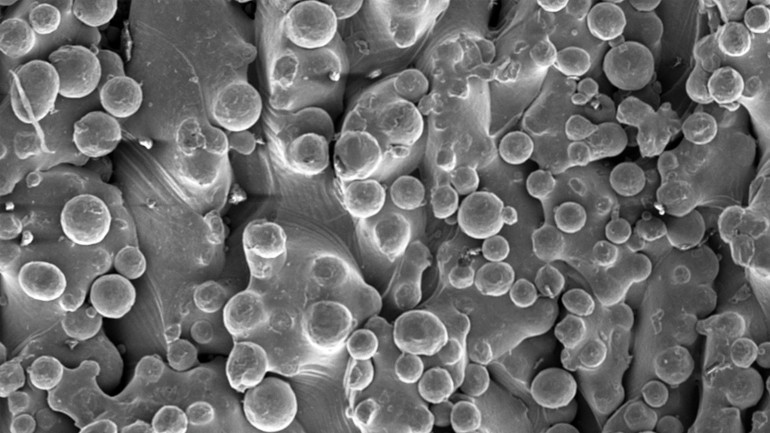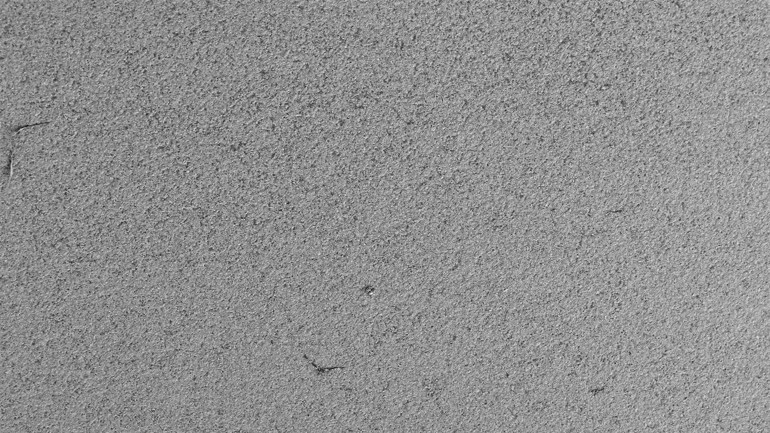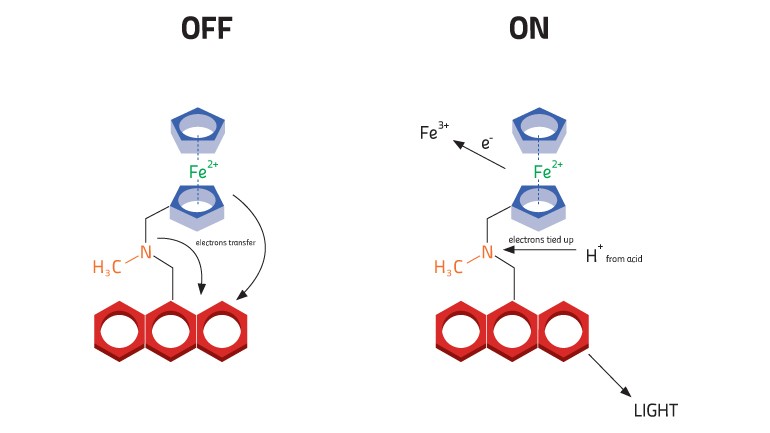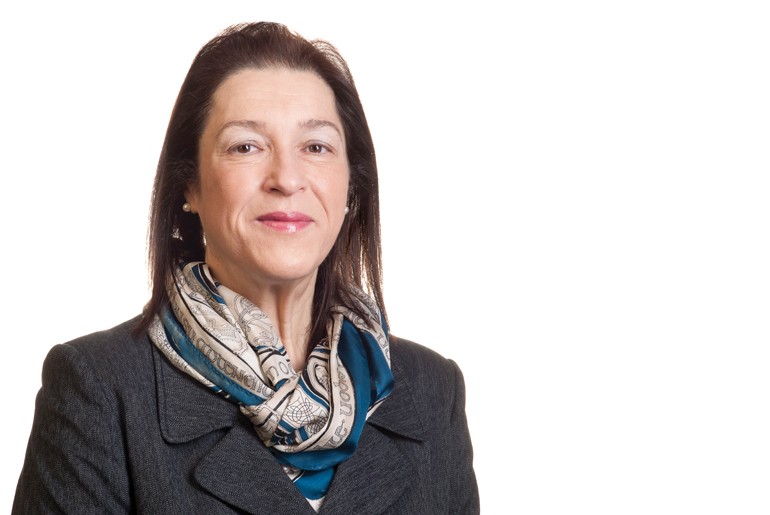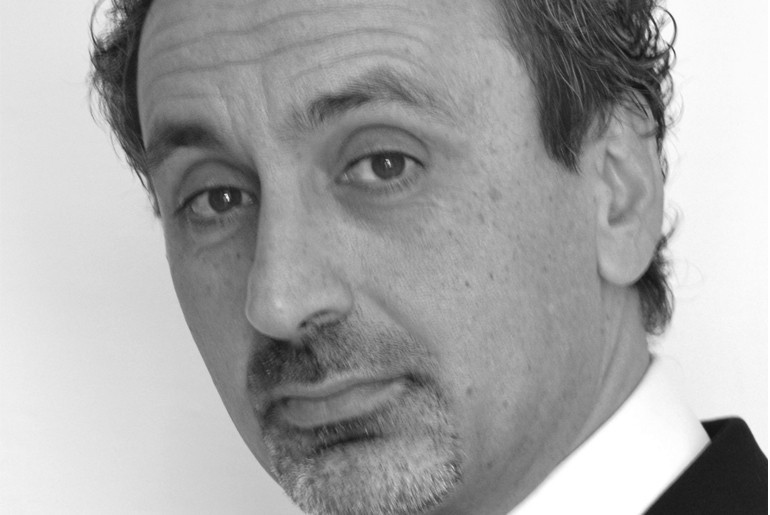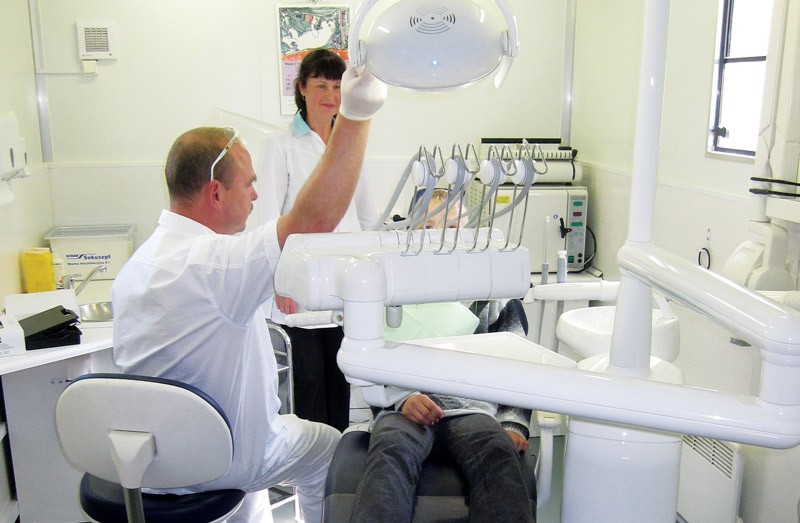Treating stone to save Maltese Culture
Malta has three UNESCO world heritage sites which need constant conservation. Generally, it is better to preserve the original building material than replace it. The conservation method called consolidation can glue deteriorating stone material to the underlying healthy stone maintaining it, but few consolidants have been tested on local Globigerina limestone. Sophie Briffa (supervised by Daniel Vella) tested a new set of consolidants which are stronger than other compounds but affected the colour of the stone. She applied five different conditions on the stone. The first three were novel treatments. They were based on a hybrid silane (tetraethylorthosilicate (TEOS) and 3-(glycidoxypropyl)trimethoxysilane (GPTMS)) but one had nanoparticles, one had modified nanoparticles, and the other lacked them. The fourth was a simple laboratory-prepared TEOS silane. The fifth was untreated limestone samples for comparison.
The treatments successfully penetrated the stone’s surface. Microscopy coupled with other techniques including mercury intrusion porosimetry carried out in Cadiz, Spain, confirmed this infiltration and the stone’s physical qualities: strength, drilling resistance, and so on. Half of the treated stones underwent accelerated weathering. The consolidants with nanoparticles or modified nanoparticles were stronger than the other treatments. They also maintained the original surface colour and improved the stones’ ability to absorb water. On the other hand, they were less resistant to salt crystallisation that can damage the stone making it brittle.
The best consolidant for Maltese stone has not yet been found. Ideally, it should have a good penetration and good weathering properties that preserve the stone’s appearance. It should allow ‘breathability’ and be reversible. Current stone consolidation techniques are irreversible since they permanently introduce new material into the stone. These are only acceptable since consolidation is a last attempt to save the stone before complete replacement.
French writer Victor Hugo summed up the importance of this research when he said, ‘Whatever may be the future of architecture, in whatever manner our young architects may one day solve the question of their art, let us, while waiting for new monuments, preserve the ancient monuments. Let us… inspire the nation with a love for national architecture’.
This research was performed as part of an M.Sc. in Mechanical Engineering at the Faculty of Engineering. The research was funded by the Strategic Educational Pathways Scholarship (Malta).
Titanium: Smoother and shapelier
Electron Beam Melting (EBM) is a state of the art manufacturing process. Using this process product designers will be limited only by their imagination. This technology uses an additive manufacturing approach where parts are built layer by layer — think of ‘3D printing’. It can use exotic metals like titanium alloys, however it does have limitations such as producing a rough surface finish that hampers its functions.
Christian Spiteri (supervised by Dr Arif Rochman) investigated whether the Electric Discharge Machining process can be used to finish parts produced using EBM to give a smooth surface (difference pictured). He treated titanium products with the Electric Discharge Machining process and microscopy showed that the finished surface consists of a set of micro-craters instead of rough grains. By adding the finishing process, more complex geometries could be created. Overall, adding Electric Discharge Machining to EBM had many benefits.
Dr Arif Rochman (University of Malta) said, ‘EBM parts can be used for a wide range of applications such as implants in the medical sector or complex tool inserts, […] which cannot be manufactured using conventional methods. Understanding the synergy between both processes is a must for product designers and process engineers to be able to manufacture high quality EBM products.’
This research was performed as part of a M.Sc. (Res) in Mechanical Engineering at the Faculty of Engineering. This research was partially funded by the Strategic Educational Pathways Scholarship (Malta). This Scholarship is part-financed by the European Union – European Social Fund (ESF) under Operational Programme II – Cohesion Policy 2007-2013, ‘Empowering People for More Jobs and a Better Quality Of Life’.
Logical chemicals
Chemistry is not usually associated with logic gates, sensors, and circuits. However, a new breed of chemist — the molecular engineer — is adding a bit of chemical spice to them. Given the right tools, his/her hands can synthesize anything, from molecules that assemble into large structures to others that can display information about their environment.
Thomas Farrugia (supervised by Dr David Magri), created a molecule that could be toggled between an ON and OFF state using AND Logic. AND logic means that it needs two chemicals to switch state, adding just one chemical makes no difference. The states are easily recognised by shining UV light on the molecule since only the ON state produces blue light.
In the OFF state, the movement of electrons from two input sites prevents light being released. Stopping the electron transfer enables light release. The blue light shines when specific chemicals bind to the two input sites. The chemicals use up the electrons being transferred, letting the output of the molecule absorb UV light and shine blue light.
The two chemicals added were an acid and an iron (III) source (like what is found in rust). The acid provides hydrogen ions that bind to the nitrogen atom, whilst the iron (III) ions attack the molecule’s iron (II) atom (pictured as Fe). The molecule displays AND logic since it needs both the acid and iron (III) to turn on light emission.
The molecule was synthesised using a one step reaction and tested to determine the strength of the ON and OFF signals. Testing by fluoresence spectroscopy is essential to determine whether it would make a viable sensor, since the technique compares the strength of the ON and OFF state. The molecule will only work well if there is a large difference between the different states, since a machine needs to detect the change.
This molecule can sense the extent of acidity and iron (III) ions in a solution, and convey that information using light, which is easily measured. The molecule’s design could also be integrated into bigger and more complicated molecules so as to carry out other logical and mathematical operations using chemicals. These molecules are a step towards chemical computers.
This research was performed as part of a B.Sc. (Hons) Chemistry with Materials at the Faculty of Science.
Finding bats by listening
Sonar for navigation was implemented after the Titanic disaster in 1912. Bats have used this remarkable technique for the past 50 million years. These nocturnal animals emit ultrasonic signals and analyse the returning echoes to avoid obstacles or predators and find their prey. For humans, studying bats means long hours in the night spent tracking their movements or capturing them with nets. To avoid some of the bat research difficulties, conservation researchers identify and study bats by eavesdropping on the ultrasonic sounds they emit.
Clare Marie Mifsud (supervised by Dr Adriana Vella) has now studied bats in Malta, linking specific sound patterns to specific bat species and their behaviour. Bats can be identified using acoustic detection because they all use different frequency patterns to suit their needs. The analyses can be used for further research and conservation monitoring of local bats.
Her study encompasses 38 research survey sites spread all over the Maltese Islands. Two bat detectors (a heterodyne and a real-time expansion detector) are used simultaneously to instantly identify and analyse the species. Nine different bat species are already confirmed to inhabit the Maltese Islands till now.
Three species (Rhinolophus hipposideros, Myotis punicus, and Plecotus austriacus) were recorded a few times (2% of survey time), since they use low intensity echolocation signals. Other bat species (Hypsugo savii, Pipistrellus pipistrellus, Pipistrellus kuhlii, and Pipistrellus pygmaeus) were detected more often (92% of survey time). All Maltese bats feed on insects and are found to spend most of their time in valleys, followed by other habitats, including cliffs, woodlands, agricultural land, shrublands and urban settlements. Valley biodiversity is important for local bat survival and needs to be preserved.
Through the use of bat acoustic detection systems and signal analyses, this detailed research provides the first important set of data of its kind for all bat species detected in the Maltese Islands. This complements other bat research, which has been ongoing since 1998 by the Conservation Biology Research Group (University of Malta). They have been involved in different bat studies, including the ecology and genetics of local bat populations. These research efforts aim at reversing the trend of decreasing bat numbers. Mifsud’s research paves the way towards developing another effective long-term monitoring tool for the conservation of bats in Malta.
This research is part of an M.Sc. in Biology at the Faculty of Science. BICREF (The Biological Conservation Research Foundation) provided voluntary assistance during fieldwork. The research was partially funded by the Strategic Educational Pathways Scholarship (Malta). This Scholarship is part-financed by the European Union – European Social Fund (ESF) under Operational Programme II – Cohesion Policy 2007-2013, ‘Empowering People for More Jobs and a Better Quality Of Life’.
Space: the final frontier for Malta
Think meets up with Dr Kris Zarb Adami to have a chat about Malta’s space opportunities. His research covers subjects from searching for extraterrestrial life to new theories of gravity.
How can a small country like Malta have a role in Space?
As an EU member Malta can continue strengthening our existing cooperation agreement with the European Space Agency to full membership. This will automatically give us access to all its projects. By participating in these projects, we will be able to leverage so that research and development for future space missions is carried out in Malta. In Malta we are already contributing to a European Space project, namely EUCLID. This satellite is due to be launched in 2017 and will be the successor to the Hubble Space Telescope. Researchers at the Department of Physics are developing image-processing algorithms that can accurately measure the shapes of the Universe’s furthest galaxies and its expansion.
Moreover, they also collaborate with the University of Bologna to monitor ‘space debris’ and near earth-objects. This is important to ensure the successful navigation of satellites to prevent accidental collisions, which cost millions of euros. Collisions are not as rare as we might think.
What are the benefits of Space research for Malta?
From the invention of disposable diapers to the development of laptops and satellite TV, space research has traditionally been a very strong contributor to everyday technology. For Malta space research can help us monitor our climate and atmospheric pollution, while providing an early warning system for tidal waves.
Conducting space research locally would bring us to the forefront of technology: ranging from biotechnology and long-lasting foods for space journeys, to the development of faster and more sensitive communication systems capable of receiving signals from deep space. Malta has just been awarded ERDF funding for new laboratory facilities at University and will contribute significantly to the future of the European Space Programme. In return, Malta will be able to leverage significant funds from this programme and also funds designated to commercialising the technologies. We need more support to get involved in more projects and attract funds to Malta.
What is the future of Space Research?
The next step lies in the development of space vehicles capable of running commercially feasible missions, such as turning the space shuttle into a commercial ‘airliner’ business. Such programmes are beginning to emerge in the US, but Europe lags far behind. Commercial spaceflights will certainly play an important role in future space research. Apart from research into transportation, researchers are trying to figure out how to live on a planet besides our own. How can future generations be able to create food products and live in space?
In Malta I would like University and the whole country to become more involved in space technology and biotech. We could also contribute to landing and docking systems for satellites and shuttles, plus space-traffic control through the University’s expertise in the Engineering Faculty.
Is there anything to lose?
The danger with taking on some new research area is that funding from other streams is spread too thinly. However, if we can manage to leverage extra funding from large Europe-wide space programmes we will be able to launch Malta’s name into space!
Going for it… and all it takes!
Antionette Caruana shares her successful career from banks to food manufacturing companies. Female, over 50 years old, raising two young adults (who think their mum is technologically challenged and old),a patient and supportive husband (partner for over 24 years), encouraging parents, and friends and family who have been there for me whenever needed. These qualities are the critical aspects of my life which is full, overflowing, sometimes exhausting but truly rewarding. My first job was nearly 35 years ago, and the years have flown by.
Many opportunities were opened by starting my career at a local bank after my first degree at the University of Malta, B.A. (Hons) in Business Management. At the same time, I married my husband who gave me more enthusiasm. My studies opened up a great interest in understanding the role of people in organisations, management, strategy, and performance.
Then I changed my job. Soon after I got married, I took the plunge and joined Playmobil entering a career that lasted more than 13 years. During this time, I learnt so much about business, running an organisation, and people management. The job was challenging and needed long hours with some tears and a dose of determination to succeed, but I could make things happen.
During my job at Playmobil, I had two children, completed my Masters’ degree and also got involved in many opportunities outside Playmobil including the Federation of Industry, the Foundation for Human Resources Development, the Richmond Foundation and worked with different departments of the public sector. I also took on different projects and lectured at University to keep in touch with students (the employees of the future) and academics (the launchpad of innovation and debate).
Being an idealist who is obsessed about achieving results, I sought my next challenge: to make a difference by taking a leading role. I applied to head Heritage Malta as CEO and was chosen. The team was extremely committed to preserving and managing Malta’s unbelievable heritage. We did some great things together like keeping museums open 7 days a week and put up the shelters over the Neolithic temples of Ħaġar Qim and Mnajdra. Following that, I worked with Lufthansa Technik Malta when this organisation was quickly growing on the island. Currently, I work with the Farsons Group as Company Secretary and Group HR manager. Being part of the senior management team of one of the long established and most successful local group of companies is another very rewarding experience and continues to provide me with enthusiasm, ambition, and pride.
Top tips to succeed
by Antoinette Caruana
-
My family remains my priority, though they may not believe this. My career has helped shape me. The following are the best values that have made a difference to who I am.
-
Have a dream and go for it… Make it happen. Believe that no one owes anyone a living. If you falter, try again.
-
Work with others.
-
Be as good as you can in what you do.
-
Always have a passion for learning in everything you do. Keep your eyes and ears open. Be aware of what is happening and contribute.
-
Keep true to your values.
-
Tell people who have made a difference to your life that they have, and treasure them.
-
Say sorry at work, at home, and invest time to build trust and commitment.
-
Be a good example by working long and hard. Sometimes you will be tired and grumpy but pick yourself up and move forward.
-
Invest in relationships which really matter.
Nobody is an island and networking is vital. You need it to work with other organisations, to continue learning, to contribute, and to be part of a country’s culture. Networking gave me confidence and helped open up opportunities. I have served as director at the Employment and Training Corporation (ETC) and until recently the Central Bank of Malta. Before that I served on MEUSAC and also on MPVQAC. The list is very long and I was in touch with various sectors of society from youths to industry. These experiences have touched my life and enriched me.
Now I’d like to talk about being a woman on the job. First off, do not let this make a difference to how you behave since your skills, competence, and professionalism matter. Going for a career demands a strong partnership at home, but I believe that if a woman is good at what she has chosen to do, she would have the sheer determination to succeed by finding those critical opportunities. In Malta, I already see a number of successful women in many spheres. And I hope we will see even more.
Ships to Computers
In 1991, when the first DOS-based PCs started to become available, I graduated from the University of Malta after having read for a degree in Electrical Engineering. The Internet and mobile telephones still had not appeared.
There were no ICT courses at the UoM. Engineering courses were the closest I could come to entering this field. Teaching of computer science was therefore obviously limited, but at least we recieved a fair amount of computer architecture and networking theory. We also built our first processor boards, and wrote our first code in assembly language. The Dean was not thrilled when I approached him to announce that I wanted a ‘software only’ thesis, a first. But I got away with it, and built a software driver for a LAN card, a networking card, using a programming language called Modula 2.
When I graduated my computing future did not look bright. I was tied by a two-year contract with Malta Shipbuilding, to whom I was assigned during the student worker scheme. I had spent three summers working there managing a team of electrical technicians, which toughened me. After this experience, managing teams should have been relatively easy.
During my last months at University I decided that I wanted to enter the IT world. I started shopping around for a job while doing some teaching at a private school. I landed a job at the software company Megabyte as a systems engineer and decided to end my contract at Shipbuilding paying the required financial penalties. Financially not the best decision but best for my career.
After seven years at Megabyte , I moved on to become the CEO of the Internet company Maltanet. I spent 8 years running the company. In Malta, during this time the Internet market was growing exponentially. The pace of technology accelerated tremendously making it a very exciting time within a highly competitive environment. When GO was fully privatised we merged all the subsidiaries and I spent nearly 3 years as Chief Commercial Officer for the group. Managing the commercial portfolio of a quad play operator was an instructive and rewarding challenge.
Today I run my own firm called ICT solutions. In 2009 I set up a joint venture focused on two areas, ICT servicing and software development. It employs a team of over 20 people, mostly UoM graduates. They provide solutions to cater for the ever growing ICT requirements of the corporate world.
So what lessons have I learnt? Firstly, there is no ‘one size fits all’ solution and everyone needs to build on their strengths. Secondly, you need to put in long hours. If you do not work harder than your normal 9 to 5 employee, then you will remain a normal 9 to 5 employee. Thirdly, you need to keep abreast and understand technology cycles and where the market is going.
Be technically competent but appreciate business logic. Fourthly, and most importantly, relate to people and build relationships with your team and clients.
The key to networking
I first heard about COST (European Cooperation in Science and Technology, a networking platform for scientists www.cost.eu) way back in 1996 during a pharmacokinetics meeting in Athens. Some participants mentioned that their attendance had been funded by COST. So on my return I contacted the Malta Council of Science and Technology to try and obtain more information. When I learnt that COST funds EU networking I quickly applied to become a member of a COST action (this is what COST calls a network). After bureaucratic leaps and bounds I become Malta’s representative on a COST action. It certainly opened new horizons to me and the networks I formed with top researchers in Europe were unique.
By 2010 my enthusiasm resulted in MCST nominating me as Malta national contact point for COST. It has been of huge satisfaction that in these three brief years Malta’s participation has risen from 6 actions to over 100. Over 150 Maltese researchers take part in COST.
Why is COST so important for Malta?
The complaint I hear most often in Malta, not only in academic circles but also among SMEs (small to medium enterprises), is that research in science is only for the elite, that it is too high brow and that it is not relevant to Malta. COST proves otherwise. What else could link disaster bioethics, to colour and space in cultural heritage to the comparison of European prostitution policies, with submerged prehistoric archaeology? Other links include the quality of suburban building stocks, integrated fire engineering and response, and language impairment in a multilingual society. COST also funds networks across a whole spectrum of research from the humanities to the fundamental sciences including string theory to childbirth in various cultures.
Participating in a COST action involves very simple administrative and funding procedures. For once, our small size is an added advantage since every COST country is allowed to nominate two members to participate in each action, putting Malta COST researchers at par with researchers from much larger countries. Achieving these results has not been easy, since many researchers hesitate and require persistent prodding. There are frequent reminders and one to one meetings to persuade them to participate. It has been a real eye-opener meeting researchers in Malta from different disciplines and learning about their research.
Deciding to participate in COST may seem a small step to some, an added administrative burden to others, while some see it as another travel commitment. COST offers the response to the conundrum of how to overcome our physical (and perhaps in some instances also mental) insularity. You should not let this opportunity pass…
COST in Malta is managed by the Malta Council for Science and Technology. For more information see www.mcst.gov.mt/networking/cost or contact Dr Janet Mifsud, COST CNC, (+356 23402582/2845, janet.mifsud@um.edu.mt) or cost.mcst@gov.mt
Dentists on wheels
The RIDT is supporting a community project that is being spearheaded by the Faculty of Dental Surgery (University of Malta). The project should improve the Maltese population’s quality of life and supply vital oral health information.
The Mobile Dental Clinic Project will carry out research through standardised scientifically established methods to determine the oral health status of Malta. As a result of scarce epidemiological data, this particular health status is not known, although various factors suggest it may be suboptimal. With such a mobile unit at hand, the Faculty will be able to study (and prevent) all areas of oral health. It will be in an excellent position to reach all sectors of society, providing routine dental care as an outreach clinic. The clinic will visit all localities in Malta and Gozo, focusing on underprivileged communities, homebound elderly patients,
special-needs schools, and institutionalised people. Equipped with modern facilities on par with any dental clinic, this unit will be manned by staff members of the Faculty of Dental Surgery together with final year dental students.
To finance this community project, the RIDT has found the backing of a number of corporates and institutions who have pledged their support through their donations. The clinic is estimated to cost around €120,000. The mobile dental clinic is expected to be on the road this Autumn.

